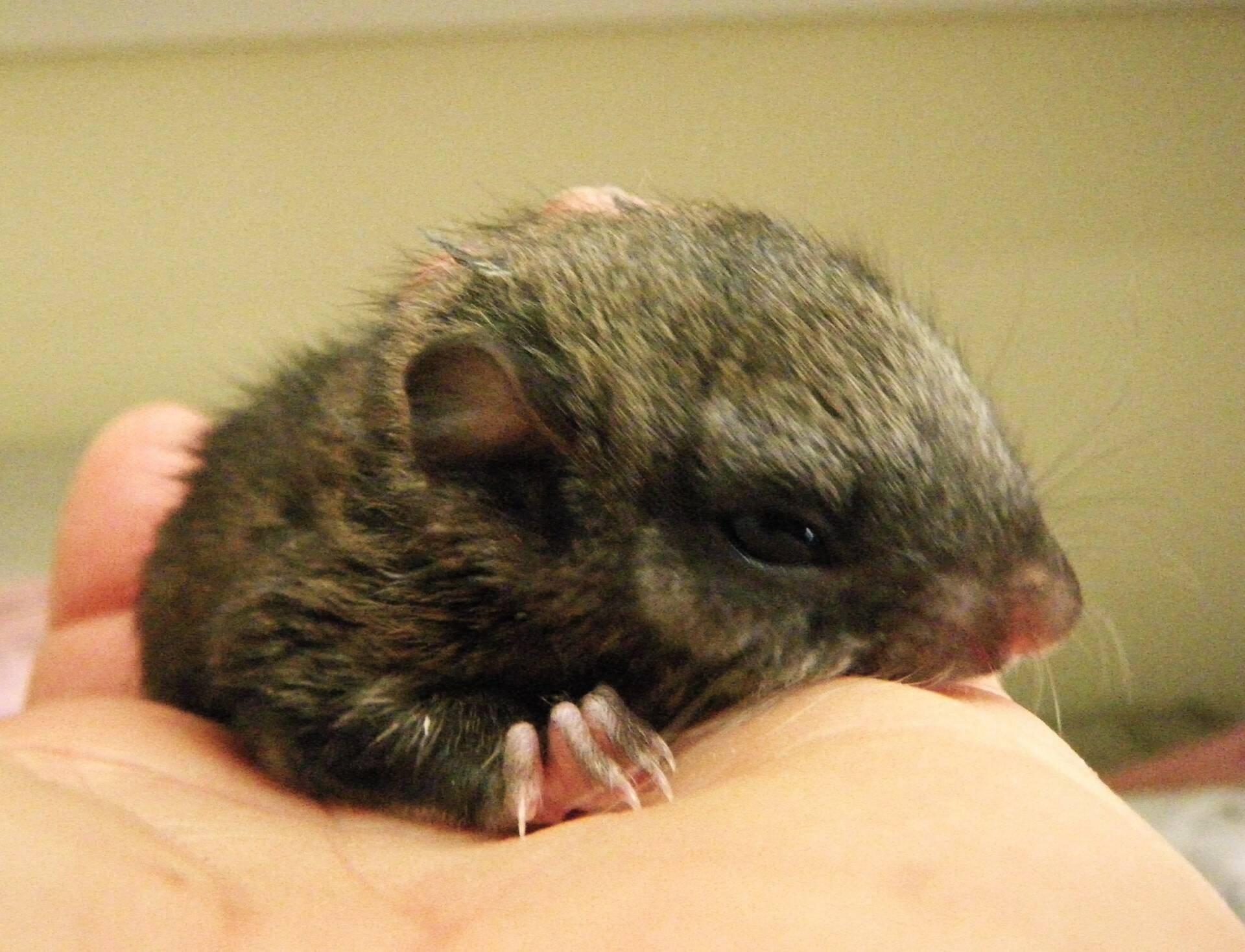By Russel Barsh (Kwiaht)
It’s a bird! It’s a bat! No…it’s a Flying Squirrel!
In the hills that stretch across San Juan Island from Lakedale to Cady Mountain and Mount Dallas, you may catch a glimpse of a small, dark and silent silhouette hurtling across a moonlit night sky framed by trees. Few islanders have actually seen a Northern Flying Squirrel. Occasionally one of these charming chipmunk-sized mammals miscalculates its trajectory and sails through an open window, drops into an uncovered outdoor trash barrel or bin. Outdoor cats sometimes “collect” them. But it has taken Kwiaht researchers more than a decade to document their presence and habits on the island, and to learn how and when they may have arrived from the mainland, where they live in small, isolated communities.
Motion-triggered cameras baited with nuts have yielded only a few fuzzy snapshots of Flying Squirrels since the search for them began. Researchers also examined thousands of acorns lying on the ground in the Garry Oak woodland on Mount Young: Flying Squirrels are known to push acorns into the ground to cache them for future use, in a way that provides a species-specific signature. Like birds, Flying Squirrels can be located and identified acoustically as well: they screech and “sing” at the same high frequencies as bats, far above the range of human hearing. Kwiaht researchers used the same ultrasound recorders to monitor the nocturnal activity of Flying Squirrels as well as bats.
Like other members of the squirrel family, Flyers have broad, opportunistic diets, enjoying mushrooms and nuts in the autumn and winter, fruits and seeds in summer, and helping themselves to gardens and compost piles where available. Their penchant for burying acorns makes them key players in the spread and renewal of Garry Oaks. San Juan Island once also had Steller’s Jays, which cache acorns beneath logs and rocks, but since the 1930s, the natural dispersal of oaks on the island has relied entirely on Flyers. At the same time, homebuilding has been disturbing more of the old Douglas fir stands where Flyers nest, and introducing more predatory pets to Flyers’ foraging grounds.
Northern Flying Squirrels were first noticed on San Juan Island only in the 1980s; were they introduced? Or are Flyers native to the island, but too shy, nocturnal, and scarce to be familiar to islanders? Southern Flying Squirrels have been in the pet trade for years, but they are a genetically distinct, separate species from Northern Flyers. It is difficult to imagine people bringing Northern Flying Squirrels to the islands for any other reason. They are a bit too large and feisty to be overlooked in a truckload of garden plants—a frequent invasion route for insects, slugs and snails.
How and when did these charming little squirrels make their way to San Juan Island? They did not “fly” here; at best, they can glide about 150 feet between trees. Nor did they swim. Like many other small native mammals and reptiles, they most likely arrived on rafts of woody debris washed down the Fraser or Skagit rivers on spring floods. (I personally witnessed rafts of debris floating down the Oldman River in Alberta 30 years ago, carrying bears, racoons, and other furry passengers towards Saskatchewan.)
Before commercial logging shrank our great coastal forests and the Coast Guard began clearing away logjams and drifting woody debris to protect shipping, “rafts” were much more common around Salish Sea bays and estuaries, and along the paths cut by tides and currents around the San Juan Islands.
Two great watersheds empty into Georgia Basin, the central Salish Sea: the Fraser from the north, and the Skagit from the east. Lopez and Blakeley are directly in the path of the Skagit outflow.
The annual Fraser outflow is an order of magnitude greater than the Skagit; large enough to affect the salinity of the seas around Waldron and north San Juan in late spring to early summer when mountain snowmelt augments the river’s flows. Statistically, the odds are on rafting down the Fraser. But Skagit rafts have also unloaded living cargo in the islands: this is the best explanation we have for why Lopez, of all the islands, has a well established population of Townsend’s Chipmunks!
PHOTO: A juvenile Northern Flying Squirrel in care at Wolf Hollow Wildlife Rehabilitation Center. If you encounter an injured Flyer, be sure to call Wolf Hollow at 360 378-5000 for pickup and treatment!



